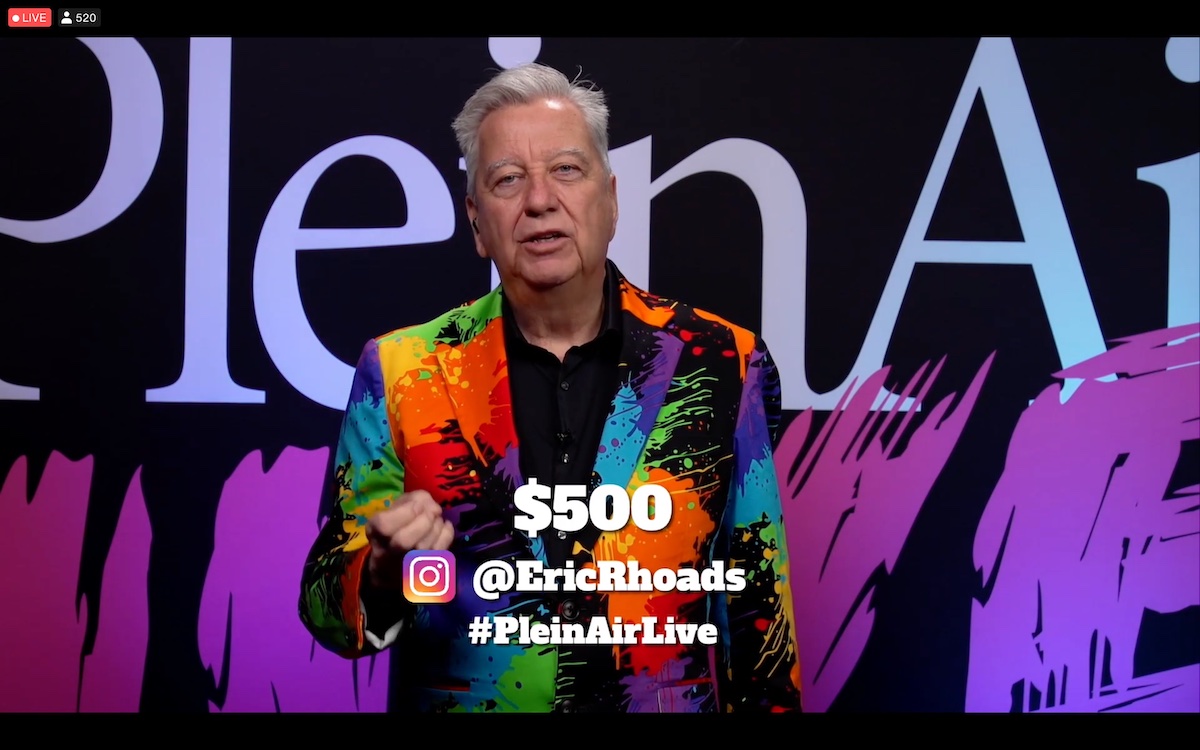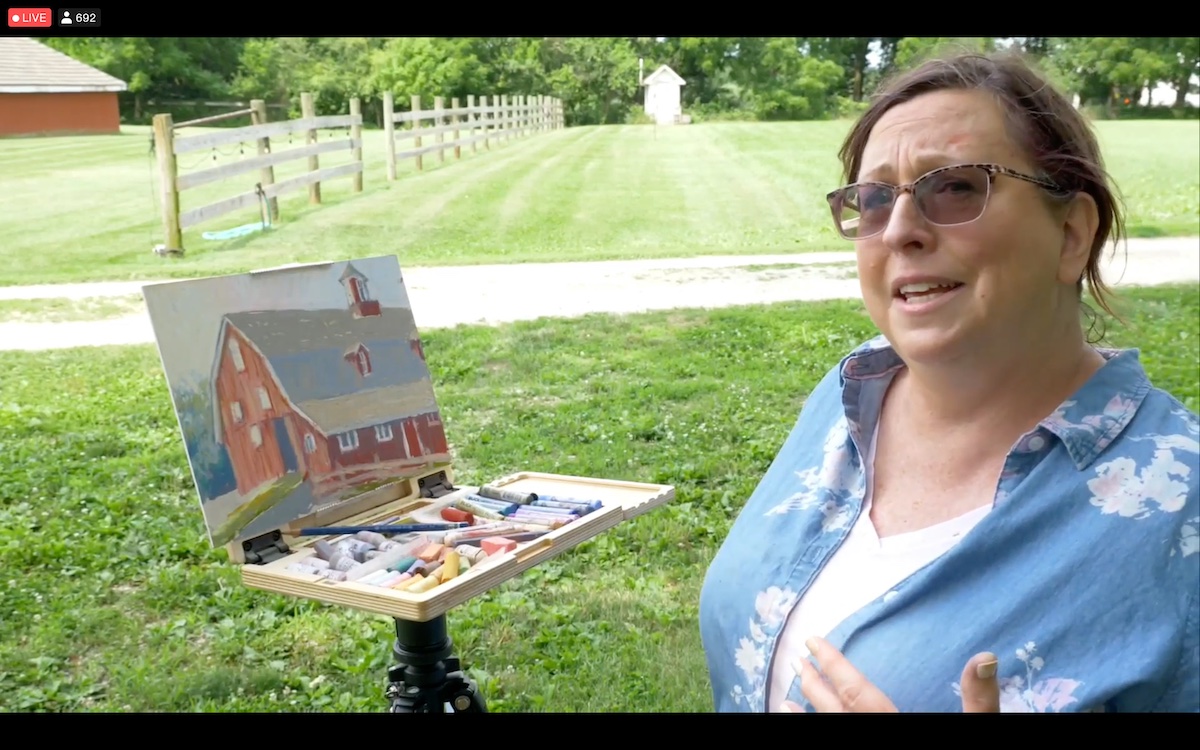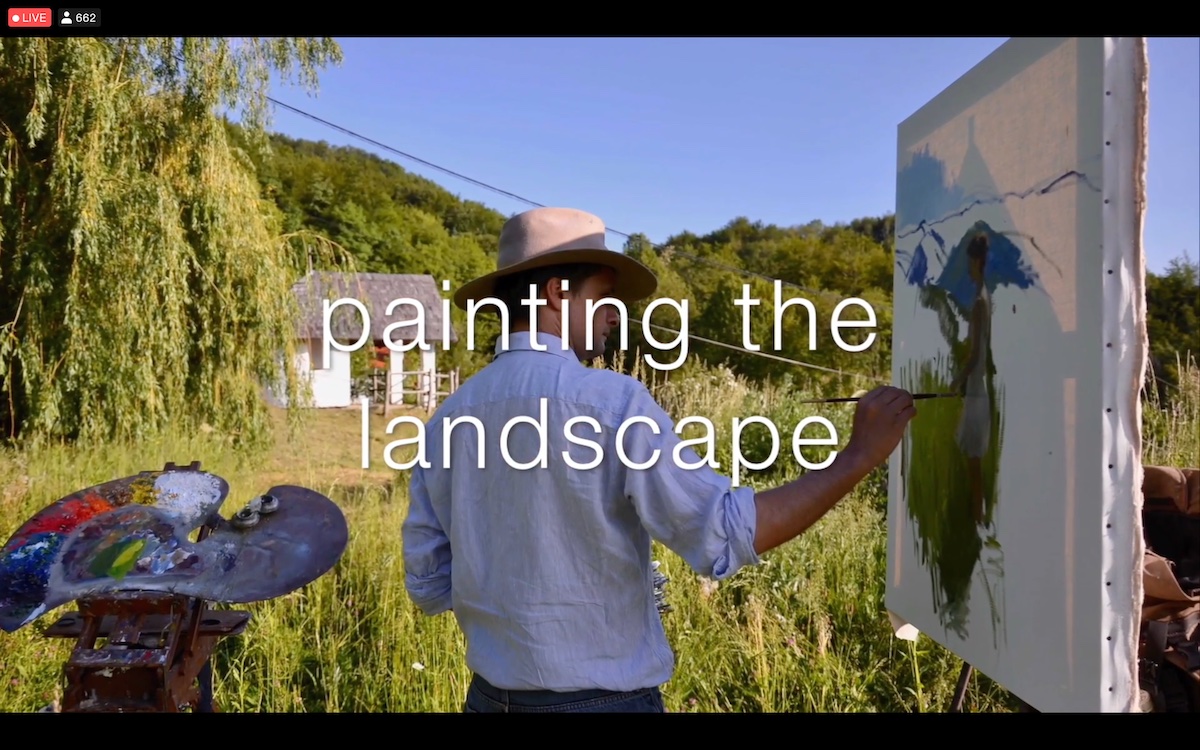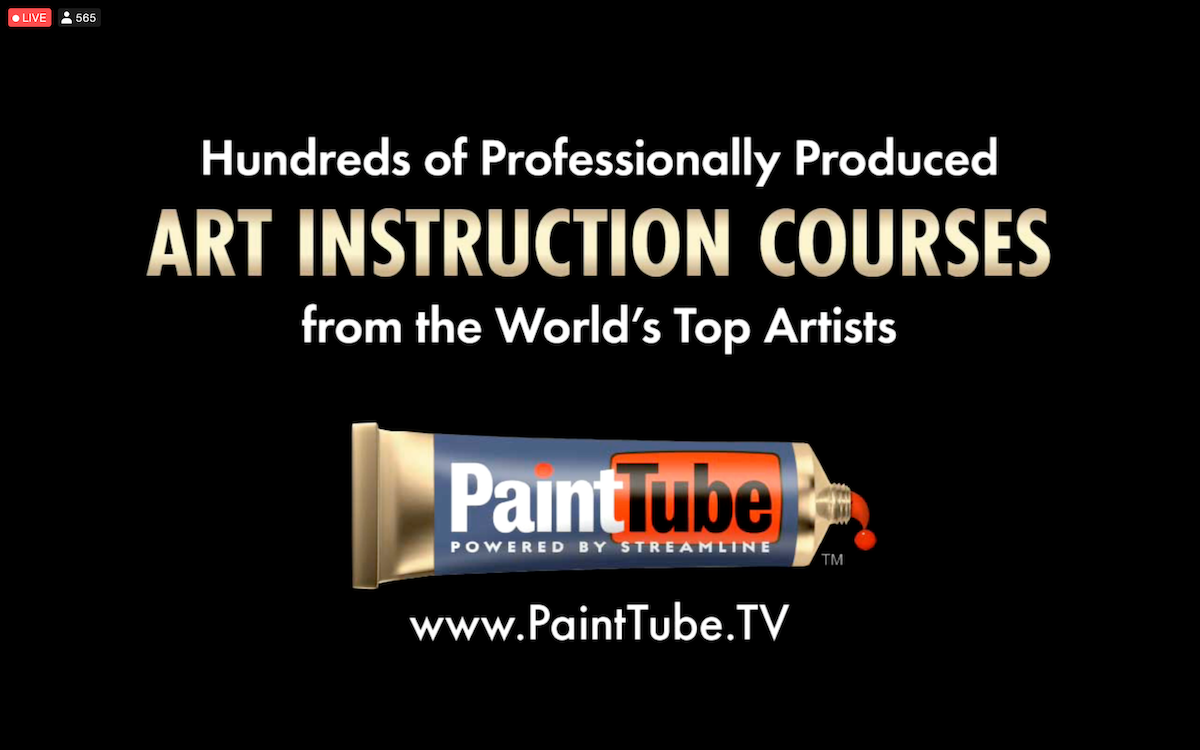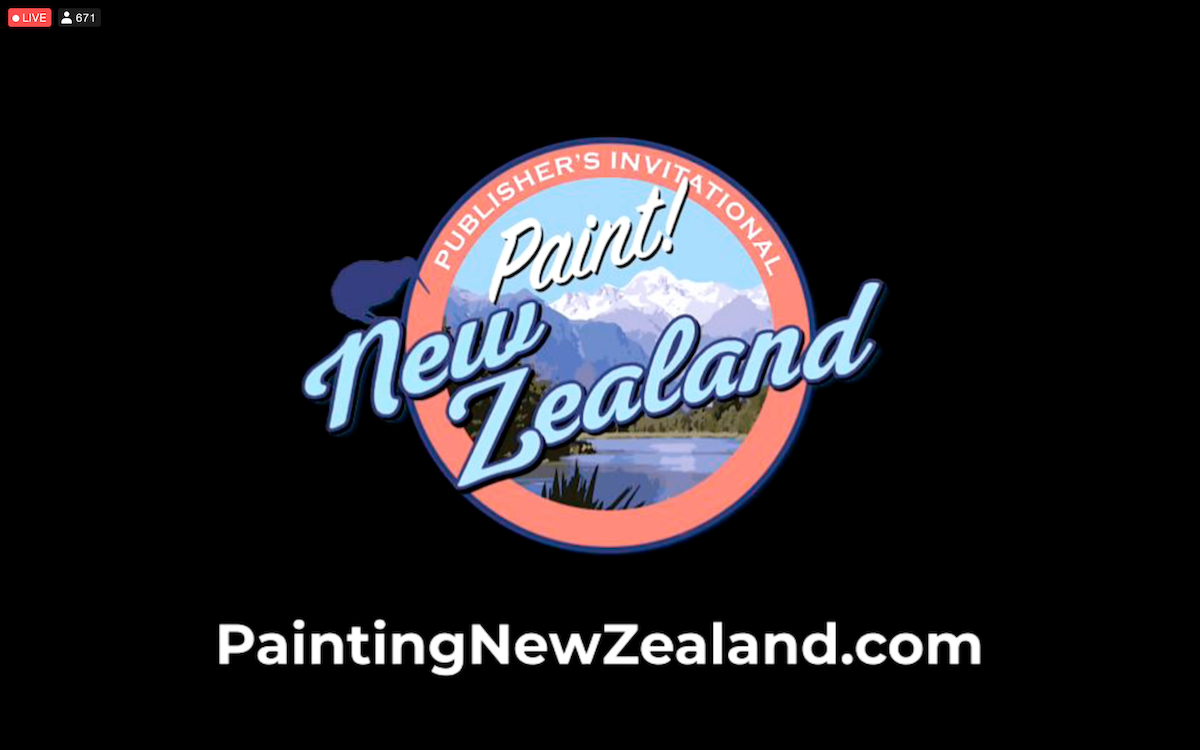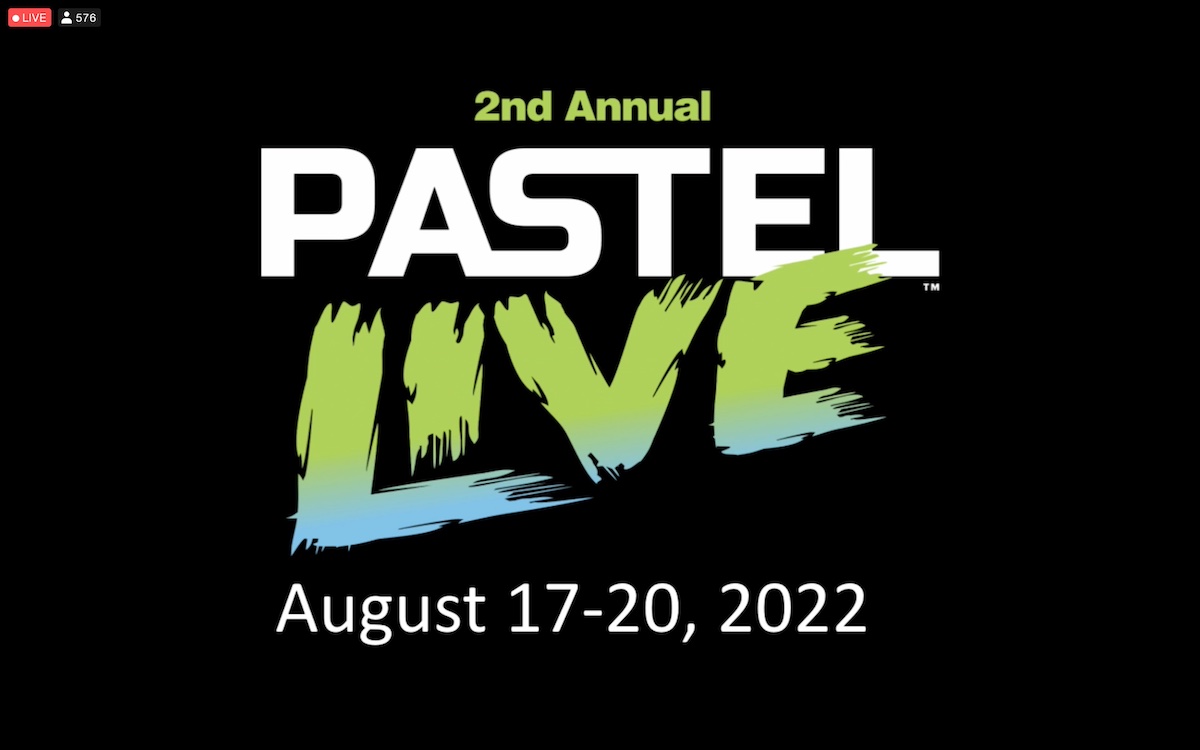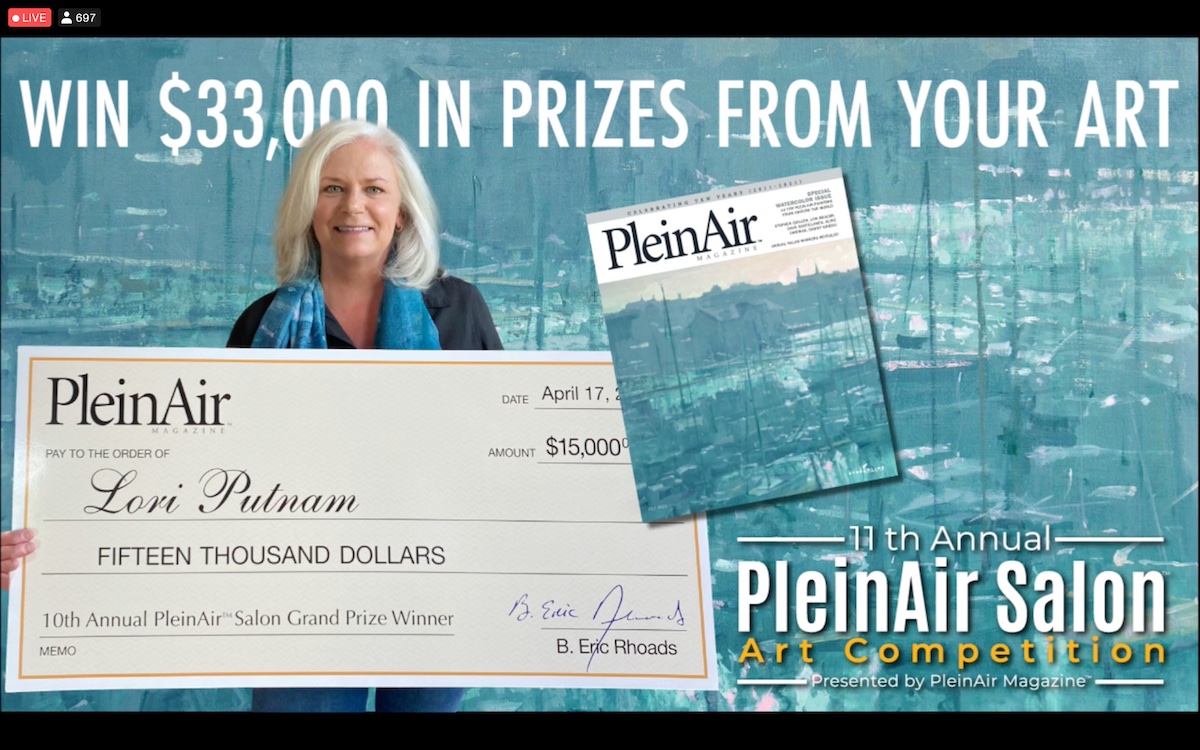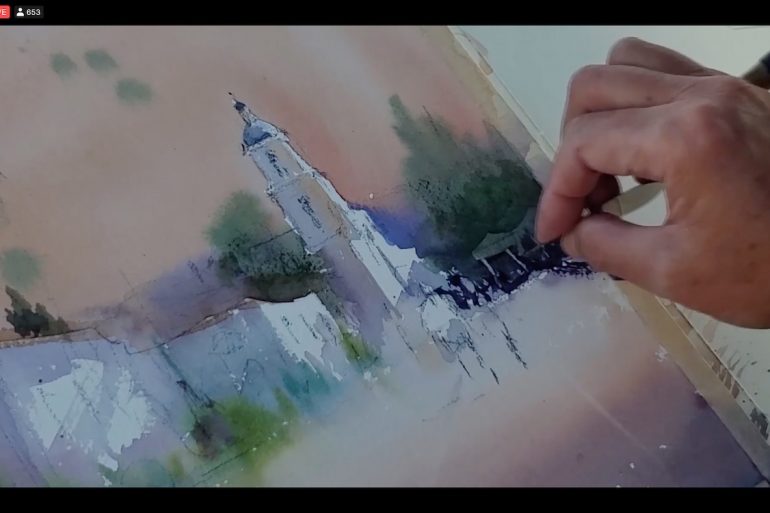
This post is also available in:


Introducing the third and final day of Plein Air Live 2022 was the unmistakable Pierre Guidetti, face of Savoir-Faire – platinum sponsor of the event – and North American ambassador for Sennelier, Fabriano and Cretacolor, among others. Pierre Guidetti, in addition to showing his support for the Ukrainian people in the senseless war that has engulfed them, is a passionate entrepreneur and artist. As a deep connoisseur of artistic techniques and materials, he is an important point of reference in the international art scene. When he begins to speak you can listen to him for hours and hours, without getting tired, because his cultural knowledge is truly vast. In addition to telling the story that, together with his wife, tied him to Sennelier many years ago, he told about the meeting with Eric Rhoads and their collaboration in the realization of events in plein air. He did not spare himself with historical anecdotes about plein air, which found their apotheosis in Monet: the first among the various artists who felt the need to leave an “impression” on the canvas. An impression destined to last over time until it reached what is today the spirit of plein air painting. Pierre Guidetti e Savoir-Faire vi aspettano ogni venerdì su Instagram (@artsavoirfaire) per trascorrere un pò di tempo insieme, conoscere gli artisti e fornire utili e preziosi consigli pratici.
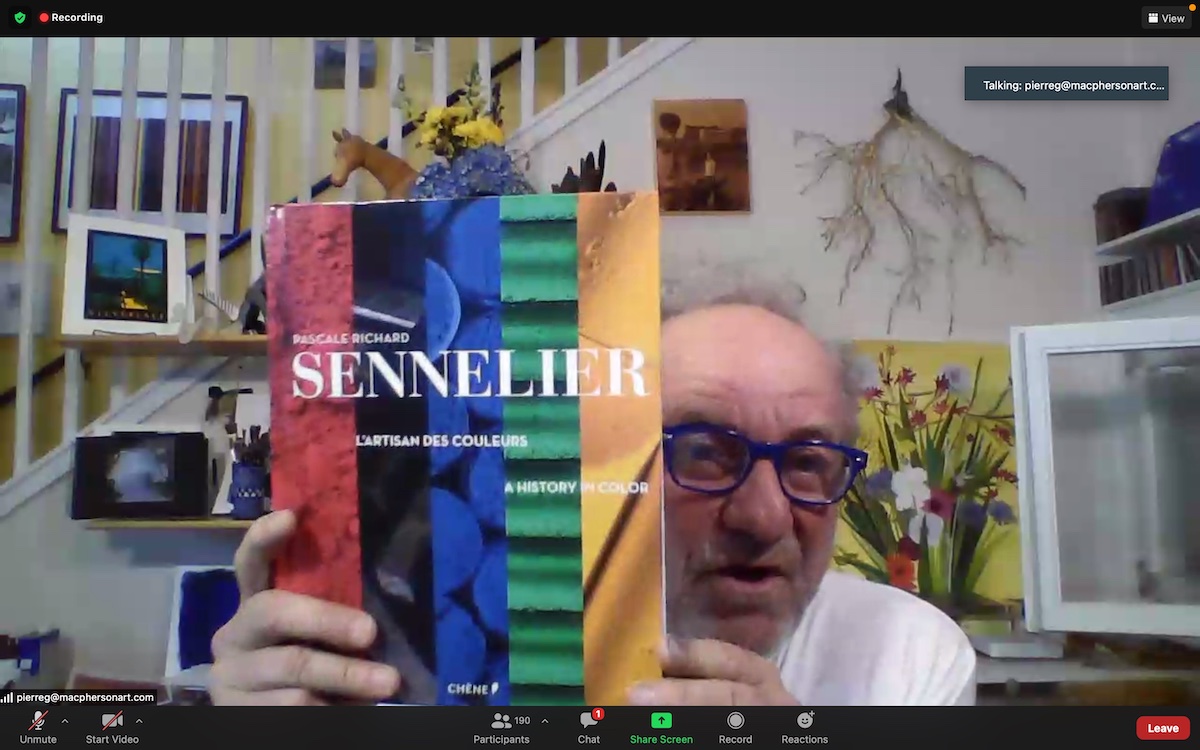
It’s a juicy, effervescent ensemble of simple forms, Kim VanDerHoek’s landscape composition of the hilly expanse of Gundlach Bundschu Winery in Sonoma, CA. The artist approached the painting by first making dark colors that she painted on the canvas with loose brush strokes in order to derive the tonal and chromatic value of the composition. “The choice of colors used for the composition depends on the visual perception of the colors, even though their rendering on the canvas may look very different from the image,” said the artist. In this regard, she argues that having the same light source on both the panel and the palette helps a lot in this task. Bearing in mind that the definition of a warm or cool color is always relative to chromatic composition, VanDerHoek uses a very simple method to establish chromatic values: warm colors tend to emerge and cool colors tend to recede. In rendering details, the artist varies colors and sizes in order to create a stronger, more finished painting because the irregular shapes help in creating a vibrant composition. VanDerHoek said that by making the same landscape over and over again, it helps a lot in focusing on mistakes and variations to be made. Only at the end, to reinforce the aerial perspective, she added “wild brushstrokes” that emphasized the shadows carried and the foliage, while using a palette knife to create texture. The artist claims to routinely finish the work with randomly placed dots of color on the canvas, but always waits a couple of days before determining whether or not the work is actually finished.
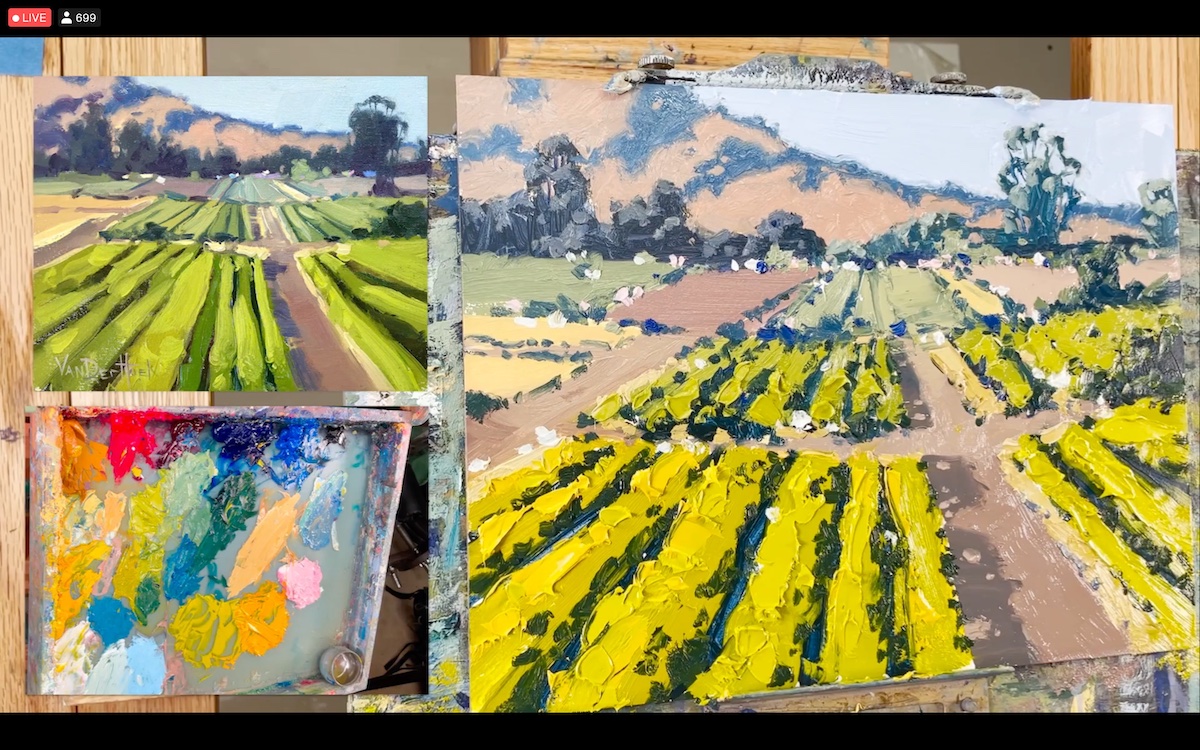
Lory McNee, besides being one of the faculty members of this third edition of Plein Air Live, is an art blogger, social media influencer, brand ambassador, producer and successful speaker, For the demo she painted The Snake River in Southern Idaho, the most dangerous river in the United States of America. In the demo session, carried out on a cold winter day, she used water mixable oil colors: these are colors that behave like traditional oil, but do not contain chemical solvents harmful to health and the environment. For the occasion she worked on a linen panel previously turned gray. Starting from the block-in which she was concerned with the design, she established the tonal values with burnt sienna and ultramarine blue. In explaining the color composition, the artist pointed out that in nature, dark colors reflect light colors and vice versa. “Plein air painting tends to emphasize nature and at the same time it puts the artist to the test by making him perform a meditative and creative experience capable of stimulating all the senses,” said the artist, who to create the sense of movement of the water usually moves the brush in different directions. It was only at the end of the composition that the artist added a couple of vertical strokes to emphasize the sense of reality of the water. As is customary during plein air sessions in the freezing months, the artist decides to make the final changes to the work indoors in the studio. Here, as a mason prefers his favorite tools, McNee uses the most congenial tools to scratch the canvas, like a credit card with which she highlights the lights.
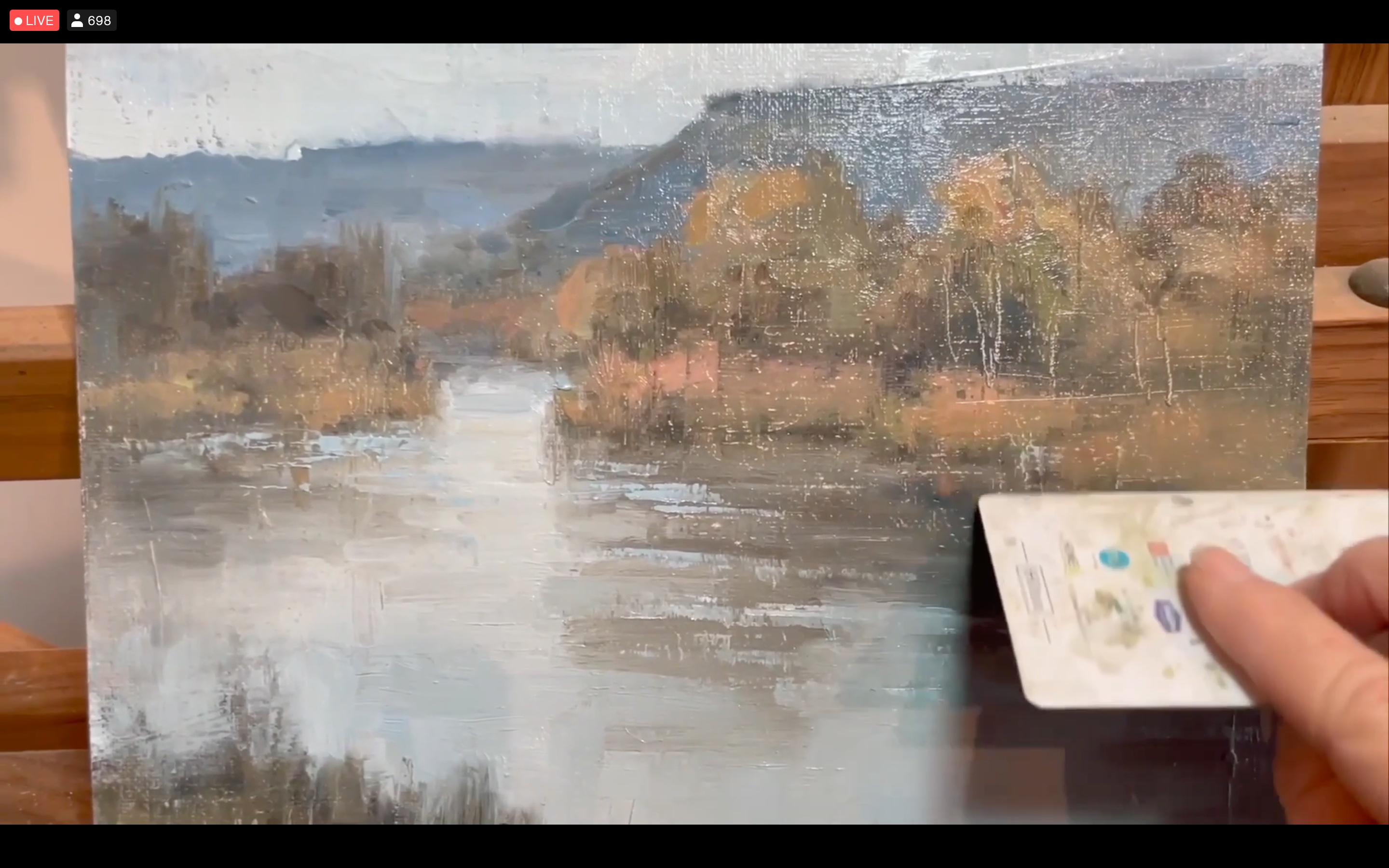
The afternoon continued in style with a demonstration by Mark Shasha, educator, author and illustrator of successful children’s books. Shasha created an oil composition of a cross-section of a beach. According to the artist, painting on an already painted surface is much easier because it helps in defining tonal values. That’s why he made a clear underpainting with previously prepared colors and put them in handy ready-to-use tubes. In the course of execution, once he reached a layering of colors of medium density, he scratched the surface to make the effect of the sea breeze on the grass, which is very reminiscent of the grassy views of Andrew Wyeth. Shasha’s method is a continuous putting in and taking out: a characteristic that oil possesses unlike other mediums. In the demo he showed how it’s possible to create beautiful and realistic optical and atmospheric effects using common and inexpensive objects, such as: a painter’s brush, a bottle spatula and a sea-sponge. Asked why he prefers oil to other mediums, the artist replied, “I use oils because it’s the most effective way for me to make the kind of image I want to create. Oil is very opaque, so I can easily change the elements in the painting and it stays wet enough that I can blend it out.” The artist’s license allowed Shasha to change the photographic reference by depicting small roses along the grassy path that added extra value to the striking composition.
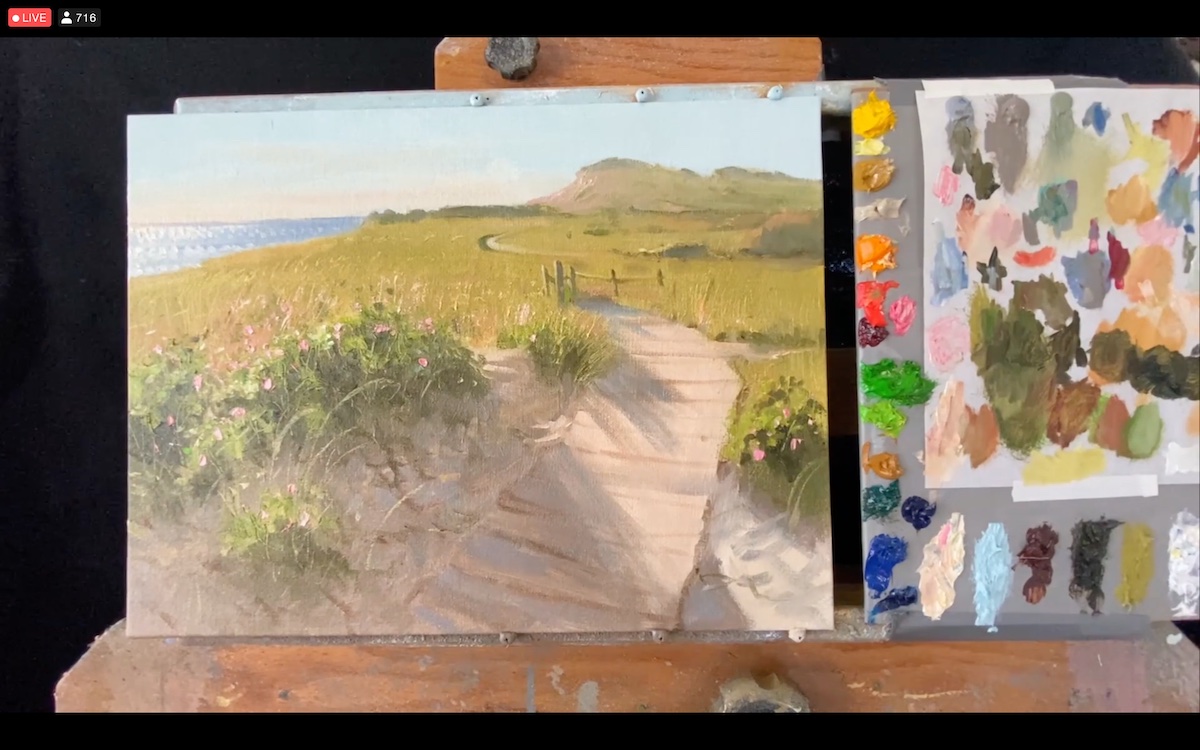
For those of you who have been to California, you know that the Spanish missions, scattered throughout the area, are historic and very impressive places. Keiko Tanabe, an accomplished watercolorist, depicted one of these missions. Before making the actual painting, however, she dwelled on the importance of doing several preparatory works, which she claims to do in different sessions and at different times of the day, so as to study the variations in light and focus on the details to be emphasized. In this way she avoids wasting precious time to devote to the final work. In the preparatory sketches, in addition to studying the various technical aspects -the architectural composition and the tonal perspective- she defines the relationships between the parts. According to Tanabe, in the realization of a composition, especially an architectural one, it is good practice to devote time both to the study of the perspective of the buildings and to the study of the chromatic composition. The latter can be difficult, especially for beginners, but it helps a lot in the realization of a correct and balanced composition. Tanabe initially made large washes in the background, in which she captured the atmosphere of the scene, simplifying the structure and keeping the shapes, lights and patterns unchanged. She finished the work by dedicating herself to the individual compositional elements, in which she emphasized the contrasts between organic and geometric forms, the high and low contrasts, which she painted in such a way as to maintain the unitary balance of the composition. In the making of her demo, she used a pair of calligraphic brushes-one large and one smaller-and reiterated the importance of maintaining the whiteness of the paper, because in watercolor it is a very valuable element. “Live painting is not just about seeing,” says Tanabe, “it is about being inspired by sounds -the wonderful sound of bells- smells and the atmosphere that surrounds us and that we need to understand spontaneously,” says Keiko Tanabe.
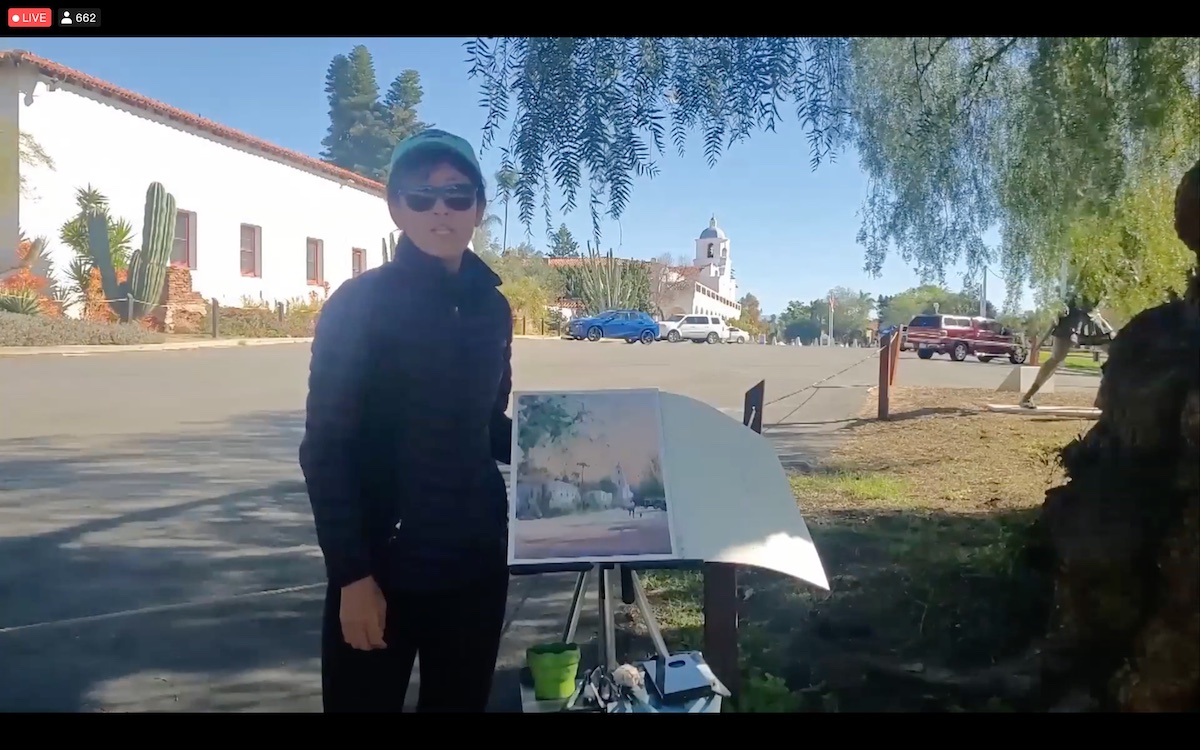
Among the Plein Air events scheduled for this year, Eric Rhoads’ organization had promised to go to Russia, an event that had been postponed for two years. But the dramatic situation that has arisen in the country has obviously made the feasibility of the trip impossible, which will instead be in New Zealand in September.
This year, in addition to John Crump, with at yesterday’s demo, another New Zealand artist, Richard Robinson, did a demonstration. He did so by representing a large scene from Sandy Bay in New Zealand and with a completely innovative approach. In the composition of the preparatory sketch, in fact, he made use of the help of digital, with two applications: Adobe PaintCan and Procreate. These are digital applications that are easy to use and allow a considerable saving of time and material. According to the artist, approaching this method could facilitate the love of plein air painting. Starting from the photographic image of the scene that he selected for the demo, he transferred the image to the applications on which he worked, increasing and decreasing in a balanced way the values of hue, chroma and value. According to Robinson, when constructing the composition it is important to create different angles of the elements, first of all to respect the natural structure of the elements and then to create play in the composition. In the drafting of color the artist believes that it is very important to squint continuously so as to establish the tonal values and create an interesting atmosphere for the audience.
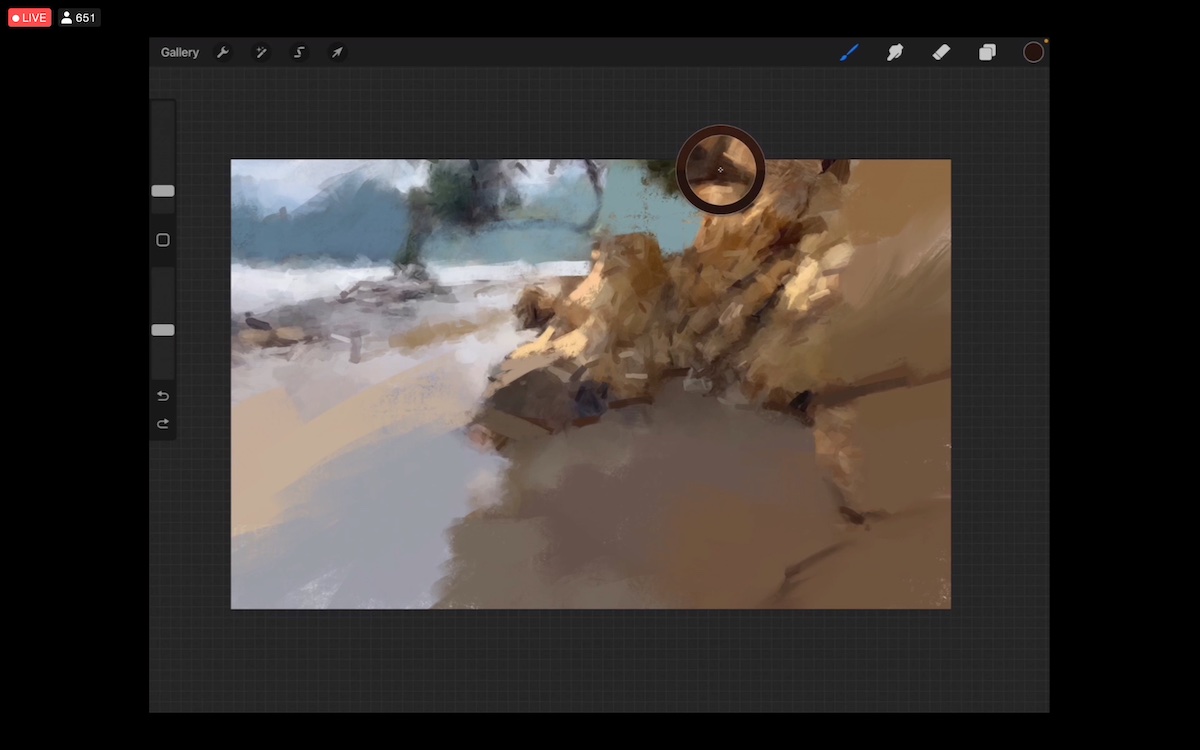
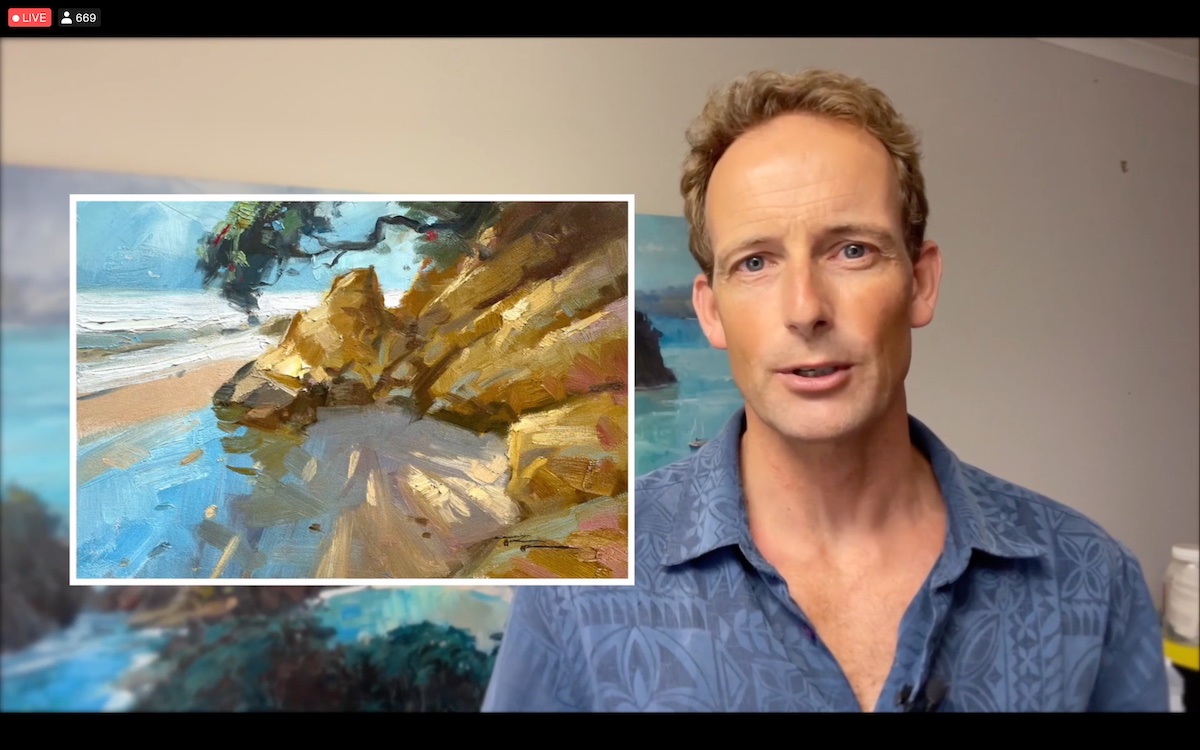
Kevin Macpherson, was the host of the last demonstration session for Savoir-Faire in which he explained a couple of concepts that every artist should experiment with: painting on a small scale -because:” painting small, helps you think big”- and painting from a limited palette -which helps in building colors in a simple way.
Macpherson was also the last “ingredient” of Plein Air Live, 2022.
A big fan of this genre of painting, the artist stated that: “Plein-air is living in the moment,” going so far as to paint a river view in the glacial landscape of New Mexico. To paint the landscape of the demo -for which he protected himself by helping himself to a comfortable sock tucked into the hand with which he holds the brush- he started with an explanation of the compositional grid. A recurring element in his work and that he declares to be fundamental in the compositional approach. The grid is simply a means of correctly placing elements in space: not only objects but also lights and shadows. It defines the relationships between the parts and disappears after having created the large forms on which the artist then proceeds with numerous layers that highlight the atmosphere, given by the tones and colors that everyone perceives in a personal way. The compositional grid also helps to avoid getting lost in the perspective and in the representation of misleading elements and allows to think about both large and small shapes – “that artists tend to realize in the same way,” said the artist – keeping the compositional values correct. In the realization of the demo Macpherson has also provided important reflective stimuli related to some aspects that plein air painting involves, among them the dichotomy between concentration and decision and between visual brain and analytical brain, explaining the importance of “being able to see” the elements that surround us.
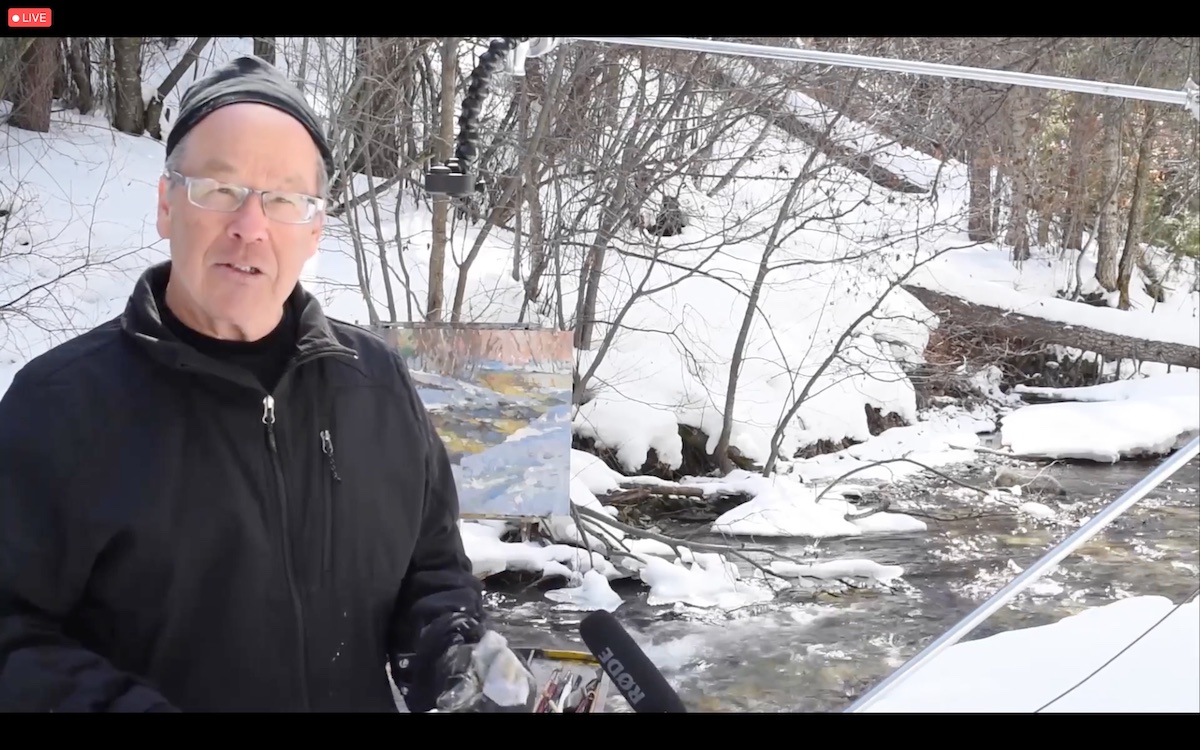
The third edition of Plein Air Live has come to an end with the enthusiasm of the participants who are invited to get involved by participating in the Plein Air Salon Art Competition,” on a monthly and annual scale. Moreover, as in all Streamline Publishing events, on the last day of the convention, participants can register for the event for the following year – Plein Air Live will be from March 8 to 11, 2023 – at an absolutely advantageous price, compared to the one regularly offered to the public.
For those of you who are nostalgic or eager to push your limits and want to greatly increase your skills, you can subscribe to the next virtual seminar at the second edition of Pastel Live, from August 17 to 20, 2022. A seminar entirely dedicated to this powerful and wonderful medium declined in all its variants. Sign up in large numbers because as Eric Rhoads says, “Education is a value at any price“.
(On the title: Keiko Tanabe’s work in progress demonstration)
